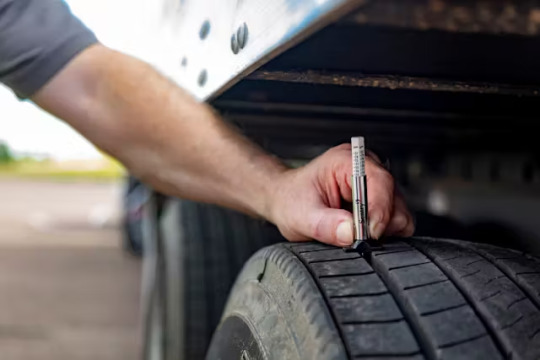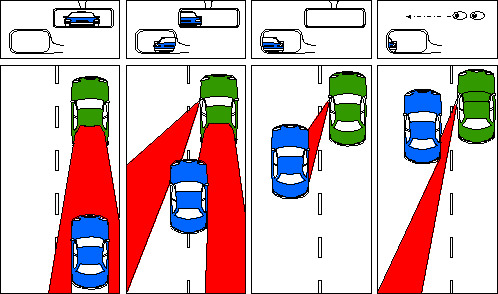#CanadianDrivingTips
Explore tagged Tumblr posts
Text
How to Handle a Roadside Inspection in Canada

Roadside inspections are routine checks carried out by police or transportation authorities to ensure drivers and vehicles are following the law. If you’re new to driving in Canada, especially as a G2 or full license holder, it’s essential to know how to handle a roadside inspection calmly and legally.
Here’s everything you need to know so you're prepared if you’re ever pulled over.
What Is a Roadside Inspection?
A roadside inspection typically involves checking:
Your driver’s license and registration
Proof of insurance
Vehicle condition (lights, tires, emissions)
Your sobriety or potential signs of impairment
Vehicle documentation for commercial drivers
These inspections can happen randomly or when an officer has reasonable cause to stop you.
What to Do If You’re Pulled Over
1. Pull Over Safely
Use your turn signal and stop on the shoulder or nearest safe location. Remain calm and keep both hands on the wheel.
2. Stay Inside the Vehicle
Unless instructed otherwise, stay in your car. Roll your window down and be polite and respectful to the officer.
3. Provide Requested Documents
You’ll typically be asked for your driver’s license, proof of insurance, and vehicle registration. Always carry these when driving.
What Officers Are Looking For
A valid and appropriate license for the class of vehicle
Up-to-date insurance and registration
Signs of impairment, fatigue, or distraction
Vehicle safety compliance
Even a minor infraction can lead to fines or warnings—especially for new drivers still under the graduated licensing system.
Know the Rules with licenseprep.ca
If you're preparing for your test or learning about Canadian driving laws, licenseprep.ca helps you study road rules, understand penalties, and build confidence behind the wheel.
Can You Refuse a Roadside Inspection?
Refusing to cooperate during a lawful inspection can result in serious legal consequences, including fines or arrest. In some cases, such as sobriety checks, refusal to comply may carry the same penalty as a failed test.
Final Advice
Roadside inspections aren’t meant to scare you—they’re meant to keep roads safe. Stay calm, be respectful, and know your rights and responsibilities. Being prepared is key, especially for new or nervous drivers.
#RoadsideInspectionCanada#NewDriversCanada#DrivingInCanada#LicensePrep#CanadianDrivingTips#KnowYourRights#G2Drivers
1 note
·
View note
Text
Understanding Blind Spots: How to Safely Change Lanes

Blind spots — those invisible zones around your vehicle — are one of the most overlooked dangers on the road. Every driver, no matter how experienced, needs to respect them. A moment's lapse in awareness can result in a side-swipe or close call, especially in fast-moving traffic. In Canada's busy city highways or rural multi-lane roads, knowing how to manage blind spots can prevent countless accidents.
So, what exactly is a blind spot? It's any area around your vehicle that is not visible through your rearview or side mirrors. Most commonly, these are just over your left and right shoulders. Even with properly adjusted mirrors, vehicles or motorcycles can hide in these zones. This makes shoulder checking — a quick glance over your shoulder — not just a suggestion, but a necessity.
Mirror adjustment is your first line of defense. Many drivers unknowingly angle their side mirrors too far inward, causing overlap with the rearview mirror. To reduce blind spots, your side mirrors should just barely show the edge of your car. This setup gives you a broader view of the adjacent lanes and helps reduce the invisible area around you.
When changing lanes, use a three-step process : check your mirror, signal your intent early, and do a shoulder check right before moving. Never rely solely on mirrors — especially in heavy traffic or when driving next to trucks, vans, or motorcycles. These vehicles are often either hidden or moving quickly through blind spots.
Modern vehicles may come with blind spot detection systems , but you shouldn't become over-reliant on them. Technology can assist, but it's no substitute for a thorough visual check. Drivers should build habits independent of technology to ensure safe lane changes in older vehicles or in cases where sensors fail or misfire.
One trick many driving instructors in Canada suggest is identifying the “no-zone” — the areas where cars often linger in your blind spot. When passing other vehicles, try not to cruise in these zones longer than necessary. Either maintain a safe distance or pass quickly to avoid being hidden in someone else's blind spot too.
Driving in poor weather like rain or snow, common across Canadian provinces, can reduce visibility even further. In such conditions, leave extra space, slow your lane changes, and double-check blind spots before merging. The reduced traction also means other drivers may not be able to respond quickly if a sudden lane change surprises them.
Keep in mind that other drivers have blind spots too . Don't assume they see you, even if you're directly beside them. Always try to position your vehicle where you're clearly visible — especially near larger vehicles like trucks or buses. If you can't see their mirrors, they probably can't see you.
Practicing on empty roads or parking lots can help new drivers get a better understanding of how blind spots feel and where they occur. Try driving slowly while a friend walks around your car — you'll be surprised by how much disappears from view.
Tip: Blind spot awareness is a skill you build with consistent habit. Use licenseprep.ca to review lane change scenarios, mirror setups, and visual guides that explain blind spots in real-world situations.
Trending Tags: #BlindSpotSafety #ChangeLanesSafely #CanadianDrivingTips #MirrorCheck #DrivingAwareness #SafeLaneChange #licenseprepca #ShoulderCheck #BlindSpot
0 notes
Text
Understanding G2 License Restrictions in Ontario
Content:
When you get your G2 license in Ontario, it's a big achievement — you're finally allowed to drive without an accompanying fully licensed driver! However, there are important restrictions attached to a G2 license that you must know and follow. Ignoring these rules could not only get you a fine but also delay your journey to a full G license.

The G2 license is part of Ontario's graduated licensing system, designed to help new drivers gain experience gradually. With a G2, you can drive alone and on any road in Ontario, including highways. However, there are limitations that especially apply to new and young drivers, which are essential for your safety and the safety of others on the road.
One of the key restrictions is related to blood alcohol concentration (BAC). G2 drivers must maintain a BAC of zero at all times when operating a vehicle. This means no drinking anything before driving, not even a single beer or glass of wine. Even a slight BAC reading can result in serious penalties, including license suspension or revocation.
Another important rule for G2 drivers under the age of 20 is related to the number of passengers they can carry at night. Between midnight and 5 am, G2 drivers aged 19 and under can only carry one passenger aged 19 or under during the first six months. After six months or upon turning 20, they can carry up to three passengers aged 19 or under during those hours. This law was introduced to minimize distractions and reduce accidents among young drivers.
Seatbelts are another crucial aspect. Every person in your vehicle must have a working seatbelt. It's your responsibility as a G2 driver to ensure that all your passengers are buckled up. If anyone isn't wearing a seatbelt, you could be fined and given demerit points — even if it's a passenger's mistake.
Although G2 drivers are allowed to drive on 400-series highways and high-speed expressways, it's recommended that new drivers practice under less stressful conditions before attempting long highway drives. Heavy traffic, higher speeds, and faster reaction times required on highways can overwhelm an inexperienced driver if not properly prepared.
A G2 license is valid for five years, but if you don't move on to get your full G license within that period, you'll have to start the entire graduated licensing process over again. That's why it's important to plan ahead and book your full G road test once you feel confident with your driving skills and experience.
Gaining real-world experience is critical during the G2 phase. Take time to drive in different conditions — during rain, at night, on highways, and in rural areas. Every new situation helps you build the judgment and reflexes that will make you a safer and more confident driver, not just for the road test, but for life.
Tip: Want to make sure you're fully prepared to ace your G2 and G tests? licenseprep.ca is an excellent resource to help you learn Ontario's road rules, study real test scenarios, and practice until you feel fully prepared for your license journey.licenseprep.ca
Trending Tags: #OntarioDrivingLicense #G2LicenseRules #NewDriversOntario #GraduatedLicensingOntario #DrivingTestPrep #RoadRulesCanada #DrivingRestrictions #ZeroToleranceDriving #licenseprepca #CanadianDrivingTips
1 note
·
View note